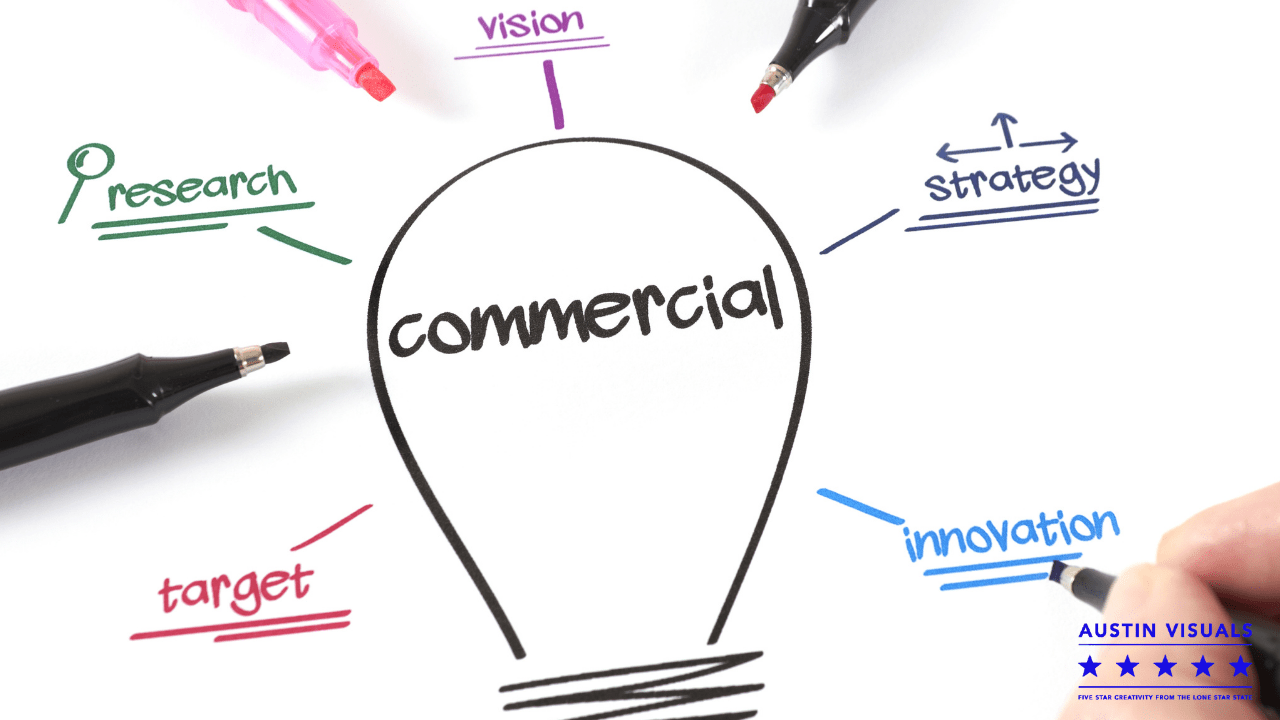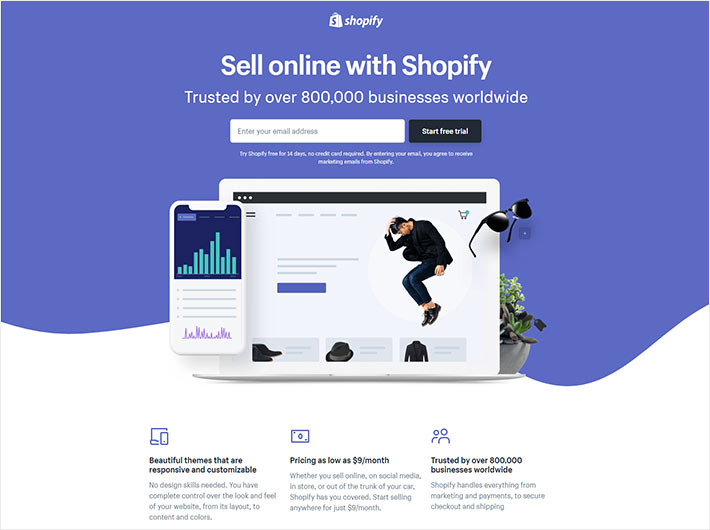Animation has become an increasingly popular tool in the world of commercial advertising, offering a captivating and memorable way to connect with audiences. In an era where attention spans are shrinking, animated commercials have the ability to capture viewer’s interest and convey complex messages in an engaging and entertaining manner. From global brands to local businesses, the use of animation in commercials has proven to be a game-changer, leaving a lasting impact on consumers.
Benefits of Using Animation in Commercials

Animation in commercials provides a multitude of advantages over traditional live-action productions. By leveraging the boundless creativity of animators, brands can bring their wildest imaginations to life, transcending the limitations of the physical world. This opens up a realm of endless possibilities, allowing for the creation of visually stunning and imaginative worlds that capture the essence of a brand’s message in a unique and unforgettable way.
Unlimited Creativity and Imagination
With animation, the only limit is the boundless creativity of the artists and storytellers involved. Brands can explore fantastical scenarios, anthropomorphize products, or even personify abstract concepts, making their commercials truly stand out in a sea of sameness.
Cost-Effective and Scalable
Compared to live-action productions, animation can be a more cost-effective solution, especially when dealing with complex visual effects or large-scale productions. Once the initial investment in animation is made, the assets can be easily repurposed and scaled across multiple platforms and campaigns, maximizing the return on investment.
Transcending Language and Cultural Barriers
Animation has the unique ability to transcend language and cultural barriers, making it an ideal choice for global brands targeting diverse audiences. By relying on visuals and universal storytelling techniques, animated commercials can resonate with viewers worldwide, fostering a stronger emotional connection with the brand.
Timeless Appeal
Unlike live-action commercials, which can become dated over time due to changing styles or demographics, well-crafted animated commercials have a timeless quality that can remain relevant for years to come. This longevity ensures that the investment in an animated commercial can continue to deliver value for an extended period.
Trends in Animation for Commercial Advertising

The world of animation for commercial advertising is constantly evolving, with new trends and techniques emerging every year. Keeping up with these trends is crucial for brands and animation studios alike, as it allows them to stay ahead of the curve and create commercials that resonate with modern audiences.
3D Animation and CGI
The rise of advanced 3D animation and computer-generated imagery (CGI) has opened up new realms of possibilities for commercial animation. From photorealistic environments to intricate character animations, 3D animation offers a level of detail and realism that was once unimaginable.
Motion Graphics and Typography
Motion graphics and dynamic typography have become increasingly popular in commercial animation, adding energy and visual interest to brand messaging. By combining kinetic typography with vibrant graphics and animations, brands can create captivating and memorable sequences that leave a lasting impression.
Seamless Integration of Live-Action and Animation
Many modern commercials blend live-action footage with animation, creating a seamless and immersive experience for viewers. This technique allows brands to showcase their products or services in a realistic setting while incorporating animated elements for storytelling or visual enhancement.
Virtual and Augmented Reality
As virtual and augmented reality technologies continue to evolve, their integration into commercial animation is becoming more prevalent. Brands can create interactive and immersive experiences that allow viewers to engage with their products or services in a virtual environment, fostering a deeper connection and understanding.
Choosing the Right Animation Style for Your Commercial

With a multitude of animation styles available, selecting the right one for your commercial can be a daunting task. The chosen animation style should align with your brand’s identity, target audience, and overall messaging. Here are some popular animation styles to consider:
2D Traditional Animation
Traditional 2D animation, also known as hand-drawn animation, offers a timeless and charming appeal. This style is well-suited for brands targeting a nostalgic or whimsical aesthetic, and it can effectively convey emotional storytelling.
2D Digital Animation
Digital 2D animation, created using software like Adobe Animate or Toon Boom Harmony, provides a modern and polished look while maintaining the classic appeal of traditional animation. This style is versatile and can be adapted to suit various brand identities and target audiences.
3D Animation
3D animation offers a high level of realism and depth, making it an excellent choice for showcasing products, demonstrating complex concepts, or creating immersive environments. This style is particularly effective for brands in industries such as automotive, technology, or consumer goods.
Stop-Motion Animation
Stop-motion animation, which involves physically manipulating physical objects frame by frame, lends a unique and tactile quality to commercials. This style can be particularly effective for brands targeting a niche or artisanal audience, as it conveys a sense of craftsmanship and attention to detail.
Motion Graphics and Typography
Motion graphics and kinetic typography can be highly effective for conveying brand messaging, highlighting key features, or creating visual interest. This style is often used in combination with other animation techniques to create dynamic and visually engaging commercials.
Impact of Animation on Consumer Engagement in Commercials

Animation has proven to be a powerful tool for capturing and sustaining consumer engagement in commercial advertising. By leveraging the captivating nature of animation, brands can create memorable experiences that resonate with viewers on an emotional level, fostering stronger brand recall and affinity.
Emotional Connection and Storytelling
One of the greatest strengths of animation in commercials is its ability to evoke emotional responses through compelling storytelling. By creating relatable characters and narratives, brands can forge deep connections with viewers, leaving a lasting impression that transcends traditional advertising.
Visual Appeal and Attention-Grabbing
Animated commercials have an inherent visual appeal that can captivate viewers and hold their attention in a world saturated with advertising messages. The dynamic movement, vibrant colors, and imaginative visuals of animation create a sense of wonder and curiosity, making it harder for viewers to ignore or overlook.
Brand Memorability and Recall
Well-executed animated commercials have a higher chance of being remembered by consumers due to their unique and engaging nature. The use of memorable characters, catchy jingles, or distinctive visual styles can help brands stand out in the minds of viewers, increasing brand recall and recognition.
Cross-Cultural Appeal
As mentioned earlier, animation has the ability to transcend language and cultural barriers, making it an effective tool for reaching diverse audiences. By relying on universal storytelling techniques and visual communication, animated commercials can resonate with viewers regardless of their cultural background or language proficiency.
Measuring Success: Analyzing the Effectiveness of Animated Commercials

While the creative and emotional impact of animated commercials is undeniable, it is crucial for brands and animation studios to measure and analyze their effectiveness to justify the investment and refine future campaigns. Various metrics and analytical tools can be employed to gauge the success of animated commercials.
Brand Awareness and Recall Studies
Conducting brand awareness and recall studies before and after the release of an animated commercial can provide valuable insights into its impact on consumer perception and memory. These studies can measure factors such as brand recognition, message retention, and overall memorability.
Online Engagement and Social Media Metrics
Monitoring online engagement and social media metrics can offer a glimpse into the real-time impact of an animated commercial. Metrics such as views, shares, likes, comments, and sentiment analysis can help gauge viewer interest, engagement, and overall sentiment towards the commercial and the brand.
Sales and Conversion Data
Ultimately, the success of a commercial is often measured by its ability to drive sales or conversions. Analyzing sales data and tracking conversion rates before and after the release of an animated commercial can provide tangible evidence of its effectiveness in influencing consumer behavior.
A/B Testing and Multivariate Analysis
Conducting A/B testing or multivariate analysis can help brands and animation studios compare the performance of different versions or elements of an animated commercial. By isolating specific variables, such as animation styles, characters, or messaging, they can identify the most effective combinations and refine their approach for future campaigns.
Cost-Effective Solutions: Animation Studio vs Live-Action for Commercials

When it comes to producing commercials, brands often face the decision of whether to invest in animation or opt for traditional live-action production. While both approaches have their merits, animation can offer a more cost-effective solution, especially for certain types of projects or budgets.
Scalability and Repurposing
One of the major advantages of animation for commercials is its scalability and the ability to repurpose assets across multiple platforms and campaigns. Once the initial investment in animation is made, the resulting assets can be easily adapted and reused for various mediums, such as social media, website banners, or even product packaging, maximizing the return on investment.
Reduced Production Costs
Compared to live-action productions, which often involve significant expenses for location scouting, set construction, talent fees, and complex post-production work, animation can offer a more cost-effective alternative. With animation, brands can save on production costs by eliminating the need for physical sets, props, and actors. Additionally, revisions and changes can be made more efficiently in the animation process, reducing the likelihood of costly reshoots or edits.
Time Efficiency and Flexibility
Animation offers greater control over the production timeline and allows for more flexibility in making adjustments throughout the creative process. Unlike live-action shoots, which are often constrained by factors like weather conditions, actor availability, or location permits, animation can proceed according to schedule, ensuring timely delivery of the final commercial.
Long-Term Investment and Brand Consistency
Investing in animation for commercials can also yield long-term benefits for brands in terms of brand consistency and recognition. By establishing a distinct visual style and recurring characters through animation, brands can create a cohesive brand identity that resonates with audiences across multiple campaigns, fostering brand loyalty and recognition.
Creating Memorable Characters in Animated Commercials

Memorable characters play a crucial role in the success of animated commercials, as they serve as the face of the brand and help establish a connection with viewers. Whether human, animal, or anthropomorphic, well-crafted characters can leave a lasting impression and enhance the storytelling effectiveness of the commercial.
Character Design and Personality
The design of a character is key to making it memorable and relatable to the target audience. From iconic mascots like the Energizer Bunny to beloved spokespersons like the Geico Gecko, character design should reflect the brand’s values and personality while embodying traits that resonate with consumers, such as humor, empathy, or reliability.
Character Development and Arc
Effective characters in animated commercials often undergo some form of development or transformation throughout the narrative, creating a sense of progression and engagement for viewers. Whether it’s overcoming challenges, learning valuable lessons, or simply showcasing different facets of their personality, character arcs can add depth and complexity to the storytelling.
Voice Acting and Dialogue
The voice acting and dialogue for animated characters are critical components that contribute to their memorability and likability. A talented voice actor can bring a character to life, infusing them with emotion, humor, or charisma that resonates with audiences. Well-written dialogue that is authentic to the character’s personality can further enhance their appeal and make them more relatable to viewers.
Catchphrases and Jingles
Catchphrases and jingles associated with animated characters can significantly impact brand recall and recognition. Memorable lines like “Just Do It” from Nike’s commercials or catchy jingles like McDonald’s “I’m Lovin’ It” have become ingrained in popular culture, reinforcing brand messaging and creating lasting associations with the characters they represent.
Innovative Techniques in Animation for Commercial Marketing
As technology continues to advance, animation studios are constantly exploring innovative techniques to push the boundaries of commercial marketing and deliver captivating visuals that engage audiences. From augmented reality to interactive storytelling, these techniques offer new opportunities for brands to stand out in a crowded advertising landscape.
Augmented Reality (AR) Integration
Augmented reality allows brands to merge the digital and physical worlds, creating immersive experiences for consumers through animated overlays and interactive elements. By incorporating AR into animated commercials, brands can offer unique and engaging content that captivates viewers and encourages active participation, driving deeper brand engagement.
Virtual Reality (VR) Experiences
Virtual reality provides an unparalleled level of immersion and interactivity, allowing viewers to step into a fully realized 3D environment and experience a brand’s story firsthand. By leveraging VR technology in animated commercials, brands can transport audiences to fantastical worlds, showcase products in a dynamic way, and create memorable experiences that leave a lasting impact.
Interactive Storytelling Platforms
Interactive storytelling platforms, such as branching narratives or choose-your-own-adventure formats, empower viewers to participate in the storytelling process and shape the outcome of the commercial. By incorporating interactive elements into animated commercials, brands can increase viewer engagement, foster a sense of agency, and create personalized experiences that resonate with individual preferences.
AI-Driven Personalization
Artificial intelligence (AI) technologies can be used to personalize animated commercials based on viewer data and behavior, delivering targeted content that aligns with individual interests and preferences. By harnessing AI-driven algorithms, brands can optimize their storytelling strategies, tailor messaging to specific demographics, and enhance the overall relevance and impact of their animated commercials.
The Role of Storytelling in Animated Commercials
At the heart of every successful animated commercial lies a compelling story that resonates with audiences, evokes emotions, and drives brand engagement. Effective storytelling techniques can transform a mundane advertisement into a memorable experience that captivates viewers and leaves a lasting impression.
Narrative Structure and Pacing
The narrative structure and pacing of an animated commercial play a crucial role in holding the viewer’s attention and guiding them through the story. By establishing a clear beginning, middle, and end, brands can create a cohesive storyline that unfolds logically and maintains momentum, keeping viewers engaged from start to finish.
Emotional Resonance and Empathy
Emotions are powerful drivers of consumer behavior, and animated commercials have the ability to evoke a wide range of feelings, from joy and nostalgia to empathy and inspiration. By infusing their stories with emotional resonance and relatable themes, brands can forge genuine connections with viewers, fostering empathy and understanding that transcends traditional advertising.
Visual Metaphors and Symbolism
Visual metaphors and symbolism can add layers of meaning to animated commercials, enriching the storytelling experience and inviting viewers to interpret the message on a deeper level. By using symbolic imagery, color schemes, or visual motifs, brands can communicate complex ideas or brand values in a subtle yet impactful way, sparking curiosity and intrigue among viewers.
Call-to-Action and Brand Integration
While storytelling is essential for engaging audiences, animated commercials must also effectively communicate the brand’s message and call-to-action. Seamless integration of branding elements, such as logos, slogans, or product placements, within the narrative ensures that viewers not only enjoy the story but also associate it with the brand and its offerings, driving conversion and brand loyalty.
Future of Animation Studios in Commercial Advertising
As the demand for visually stunning and engaging content continues to rise, animation studios are poised to play a pivotal role in shaping the future of commercial advertising. By embracing technological advancements, creative innovation, and evolving consumer preferences, animation studios can drive industry growth and redefine the standards for effective marketing communication.
Enhanced Personalization and Interactivity
With advancements in AI, machine learning, and real-time rendering, animation studios can offer enhanced personalization and interactivity in commercial advertising. By creating customizable experiences, interactive narratives, and tailored content based on viewer data, studios can deliver targeted messages that resonate with individual preferences and behaviors, maximizing engagement and ROI.
Cross-Platform Integration and Transmedia Storytelling
Animation studios are increasingly exploring cross-platform integration and transmedia storytelling to extend the reach and impact of commercial campaigns. By developing cohesive narratives that span multiple channels, such as TV, social media, mobile apps, and experiential events, studios can create immersive brand experiences that captivate audiences across diverse touchpoints, fostering brand loyalty and advocacy.
Sustainability and Ethical Branding
In response to growing environmental concerns and ethical considerations, animation studios are embracing sustainable practices and promoting ethical branding in commercial advertising. By prioritizing eco-friendly production methods, diversity and inclusion in storytelling, and socially responsible messaging, studios can position themselves as champions of positive change and attract socially conscious consumers who value authenticity and integrity in advertising.
Immersive Technologies and Experiential Marketing
The integration of immersive technologies, such as AR, VR, and mixed reality, presents exciting opportunities for animation studios to revolutionize commercial advertising and create unforgettable brand experiences. By leveraging these technologies to craft interactive narratives, gamified content, and virtual product demonstrations, studios can transport audiences to new dimensions of engagement, driving brand awareness and differentiation in a competitive marketplace.
Conclusion
In conclusion, the use of animation in commercials offers a myriad of benefits for brands seeking to elevate their marketing efforts and connect with audiences on a deeper level. From creating visually stunning narratives to fostering emotional connections and driving consumer engagement, animation has proven to be a versatile and impactful tool in the ever-evolving landscape of commercial advertising.
By staying abreast of emerging trends in animation, harnessing innovative techniques, and prioritizing storytelling excellence, brands and animation studios can collaborate to produce compelling and memorable commercials that resonate with viewers, inspire action, and ultimately drive business success. As we look towards the future of animation studios in commercial advertising, one thing remains clear: the power of animation to captivate, educate, and entertain will continue to shape the way brands communicate with their audiences, forging lasting relationships built on creativity, authenticity, and shared experiences.








